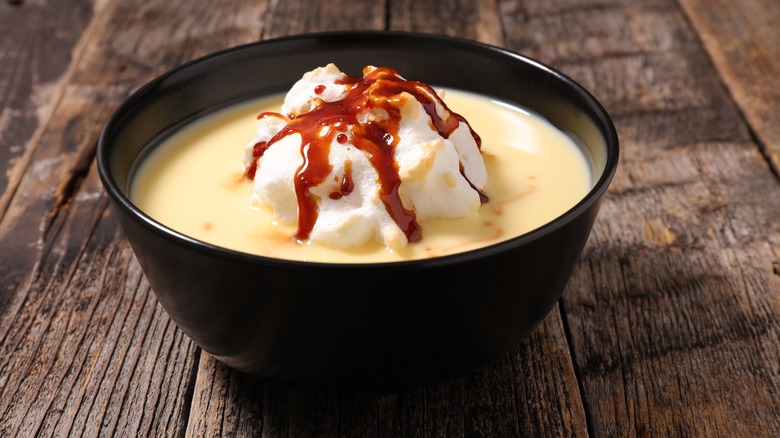The Old-School French Dessert Beloved By Julia Child

Margouillatphotos/Getty Images
The custard — or crème anglaise — portion of the recipe requires you to combine egg yolks, eggs, sugar, and cornstarch over low heat until it thickens and can coat the back of a spoon (just over 10 minutes). Whisking slowly while the mixture is on the heat is the key to incorporating these ingredients. If the heat is too high or the mixture is not whisked properly, you risk ending up with scrambled eggs.
The meringue is another critical component of this dish, so make sure to use room temperature eggs to get your meringue extra fluffy. It's important to keep in mind that the meringue needs to be baked, cooked, or even poached so it gets that "floating" effect. Some recipes suggest poaching the meringue in milk, then using the leftover milk to make the base for the crème anglaise to maximize creaminess and minimize waste.
If you want to experiment, you can incorporate fruit like apricots, strawberries, or citrus into the custard. One option is to add fresh fruit into the custard mixture while it's on the stove, just as it has begun to thicken. For a citrus-flavored custard, you can simply use the zest and incorporate it as the mixture is cooling. You can also try substituting fresh fruit with dried fruit in this recipe, but be sure that it is properly cooked through and fully incorporated. If all else fails, tempering some fruit liqueur into the custard can take it to the next level.












